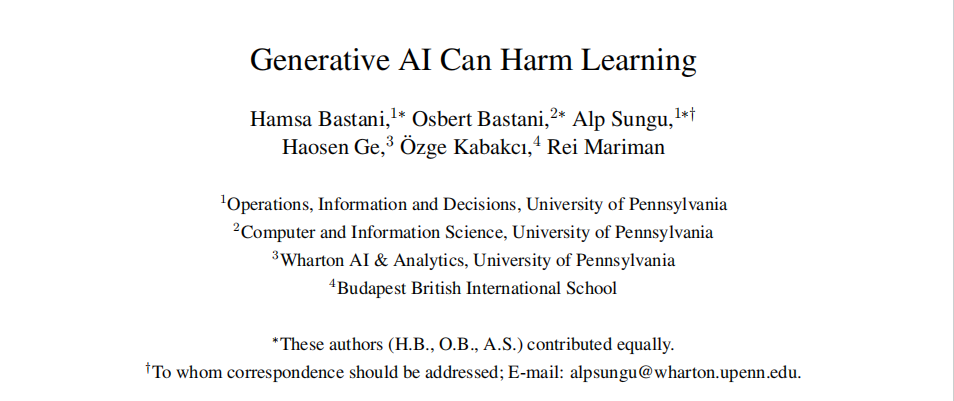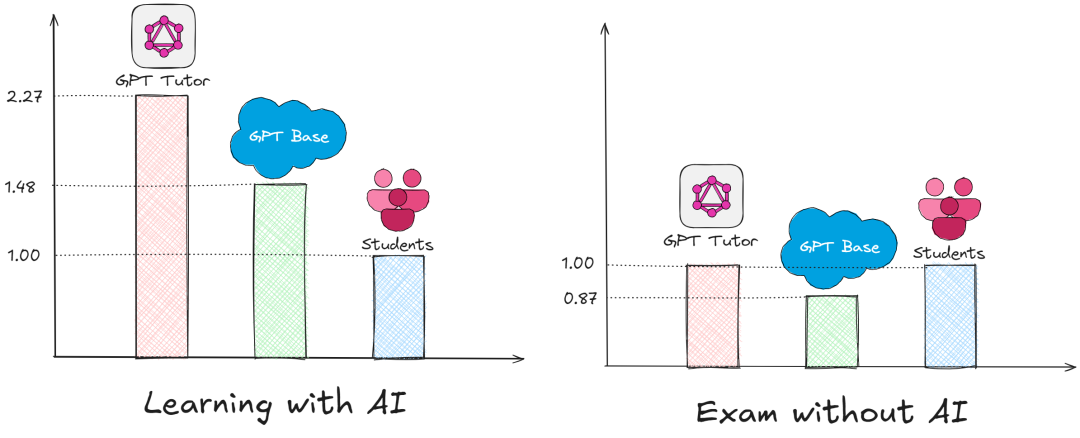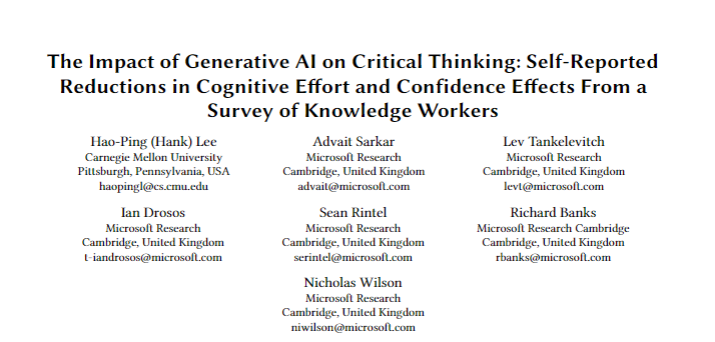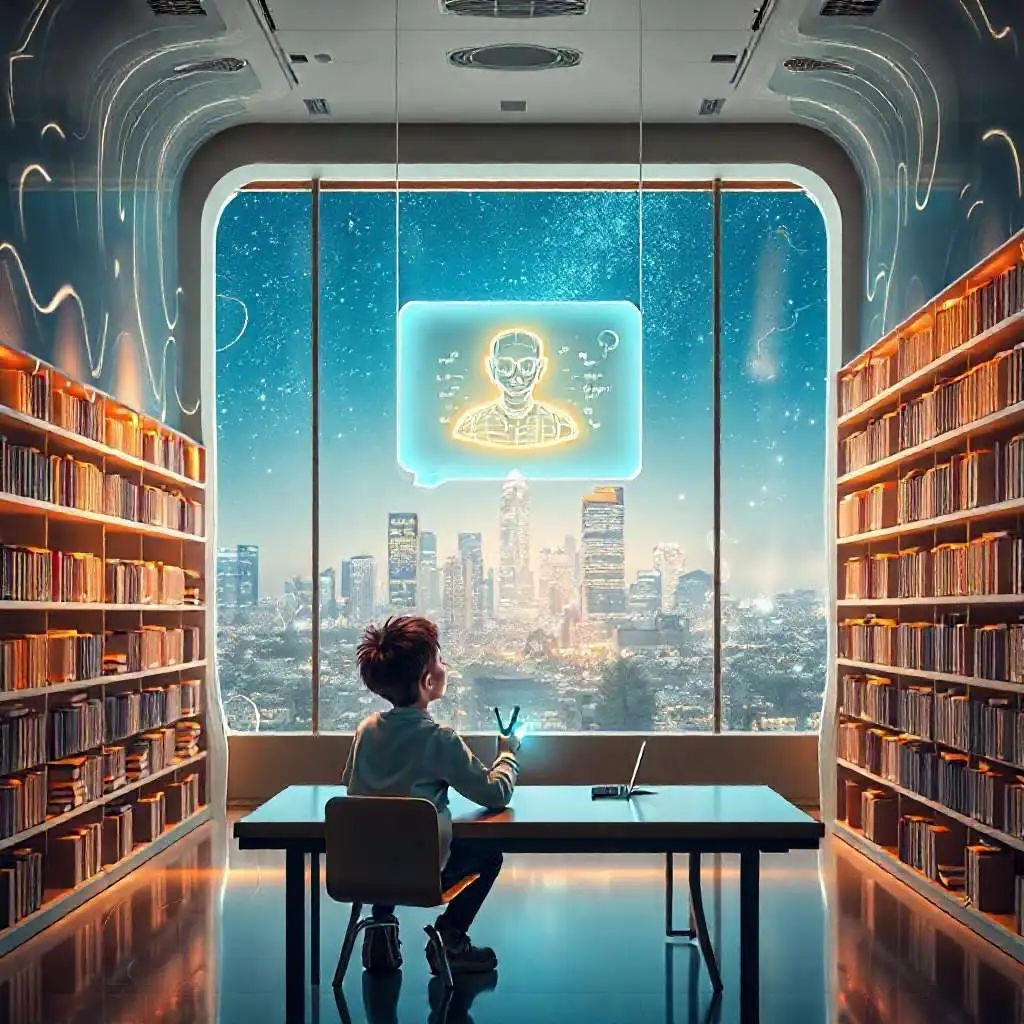The wave of artificial intelligence is gradually rising, flowing into the field of education, and becoming a remedy for the “impossible triangle of education“. However, more and more studies indicate that immediate convenience may come at the cost of long-term capability.
Who Is the Alarm Bell Ringing For?
In 2024, Wharton School published a paper titled “Generative AI Can Harm Learning”, which was named one of the top ten important educational studies of 2024 by the well-known American educational media Edutopia.

Experiments found that students using GPT-4 showed significant improvement in immediate exercises (up to 127%), but once AI support was lost, students relying on the standard ChatGPT (GPT Base) scored 17% lower than those who did not use it. In other words, students who directly obtained answers through AI saw a decline in their learning abilities.
Just like directly copying answers from Xiaoyuan or Zuoyebang, every generation seems to have its own homework copying method.
However, for those students using the educational version of ChatGPT (GPT Tutor), due to the inability to obtain direct answers[2], they maintained their “learning ability” in the final tests.

This long-term study covering over 1,000 students seems to be ringing the alarm for us: the immediate convenience provided by AI may come at the cost of long-term capability.
The Inertia of Thought
Coincidentally, according to research from Microsoft Research and Carnegie Mellon University, knowledge workers who are confident in their tasks are better at critically evaluating the outputs of generative AI; conversely, once they believe the AI’s answers are sufficient, they cease to think deeply: this situation will lead to a decline in their critical thinking abilities.

For teachers, students’ grades are an important outcome of education, but we are actually more interested in what students actually learn and their learning abilities. In fact, no industry needs to focus on the process more than education, and in this process, educators will inevitably encounter learners’ inertia of thought.
Inertia of thought refers to a thinking state that relies on inertia and lacks proactive thinking. It is characterized by a tendency to use ready-made answers, inherent patterns, or others’ viewpoints when faced with problems, rather than engaging in in-depth analysis, questioning, or innovation.
——DeepSeek
A large number of studies have shown[4] that learners’ inertia in thinking patterns, when faced with AI outputs that seem logically rigorous but actually contain erroneous information, not only leads to the acceptance of misinformation but also results in the loss of the habit of questioning and verifying, further intensifying the inertia of thought.
In fact, factual errors are not the entirety of AI’s misinformation; what is even more fatal are the biases present in AI training data, such as a tendency to recommend science and engineering fields for boys while suggesting humanities or arts for girls in career planning.
——Xiao R
The Defense Line of Education
In this long-term study, researchers emphasized the necessity of promoting guided AIs like “GPT Tutor”, which, through Socratic questioning methods, forces students to engage in the derivation process, can eliminate the negative effects on long-term performance.

As we inevitably enter the AI era, we should also reflect on what constitutes the necessary “AI literacy course” for learners. By teaching learners to converse with AI[5], achieving precise questioning, cross-verifying information, and identifying potential biases in generated content, everyone can further understand how to effectively ask questions to AI through Xiao R’s previous courses.
For the complete video, please visit: https://isherc-market-smile.shec.edu.cn/detail?courseId=CF46D54356085D00&resid=37D3CB53AC71430C
In addition, some researchers have provided other suggestions, including but not limited to:
First, clarify the boundaries of AI use[6]. Distinguish between the “AI assistance zone” (e.g., grammar correction) and the “no-fly zone” (e.g., mathematical proof derivation).
Second, reconstruct the evaluation system. Increase the weight of open-ended tasks (such as project-based learning), reduce the proportion of standardized tests, and strengthen the cultivation of critical thinking abilities.
Third, emphasize the transparency of AI models[7]. The development and implementation of general artificial intelligence technology should prioritize transparency, accuracy, and privacy protection to reduce potential risks such as biases.
Conclusion
In response to Wharton School’s study, some researchers have made their own critical evaluations[8], pointing out that the study contains confounding factors such as students, teachers, external support, family background, and technological familiarity, suggesting that the original study may have overestimated the negative impact.

As future research continues to improve and deepen, we may arrive at more accurate conclusions. Nevertheless, how to understand the role of AI in the educational environment and what role it should play are questions that all educators should contemplate.
Education has never been a simple production environment, but rather a humanistic environment that is always directed towards people. In the face of AI, education must also have its own defense line to resist the “unconscious storm“, because:
It is important not to stop questioning, curiosity has its reason for existence. When a person contemplates the eternal mysteries, the secrets of life, and the wonderful structure of reality, he cannot help but feel awe. If a person tries to understand a bit of this mystery every day, that is enough.
——Einstein
References[1]
Generative AI Can Harm Learning: https://hamsabastani.github.io/education_llm.pdf
[2]
GPT Tutor: A method that avoids direct answers from AI through prompt design and assists students in learning through guided Q&A.
[3]
The Impact of Generative AI on Critical Thinking: Self-Reported Reductions in Cognitive Effort and Confidence Effects From a Survey of Knowledge Workers: https://www.microsoft.com/en-us/research/uploads/prod/2025/01/lee_2025_ai_critical_thinking_survey.pdf
[4]
Does Artificial Intelligence Cause More Harm than Good in Schools?: https://journal.ump.edu.my/ijleal/article/download/10432/3188
[5]
Students’ voices on generative AI: perceptions, benefits, and challenges in higher education: https://link.springer.com/content/pdf/10.1186/s41239-023-00411-8.pdf
[6]
Generative or Degenerative?! Implications of AI Tools in Pre-Service Teacher Education and Reflections on Instructors’ Professional Development: https://journals.library.brocku.ca/brocked/index.php/home/article/download/1176/491
[7]
Students’ voices on generative AI: perceptions, benefits, and challenges in higher education: https://link.springer.com/content/pdf/10.1186/s41239-023-00411-8.pdf
[8]
Critique of “Generative AI Can Harm Learning” Study Design: https://www.semanticscholar.org/paper/Critique-of-Generative-AI-Can-Harm-Learning-Study-Tan-Rajaratnam/f5caf3e71421481238f7bdc0f69a6783cf3cd642
